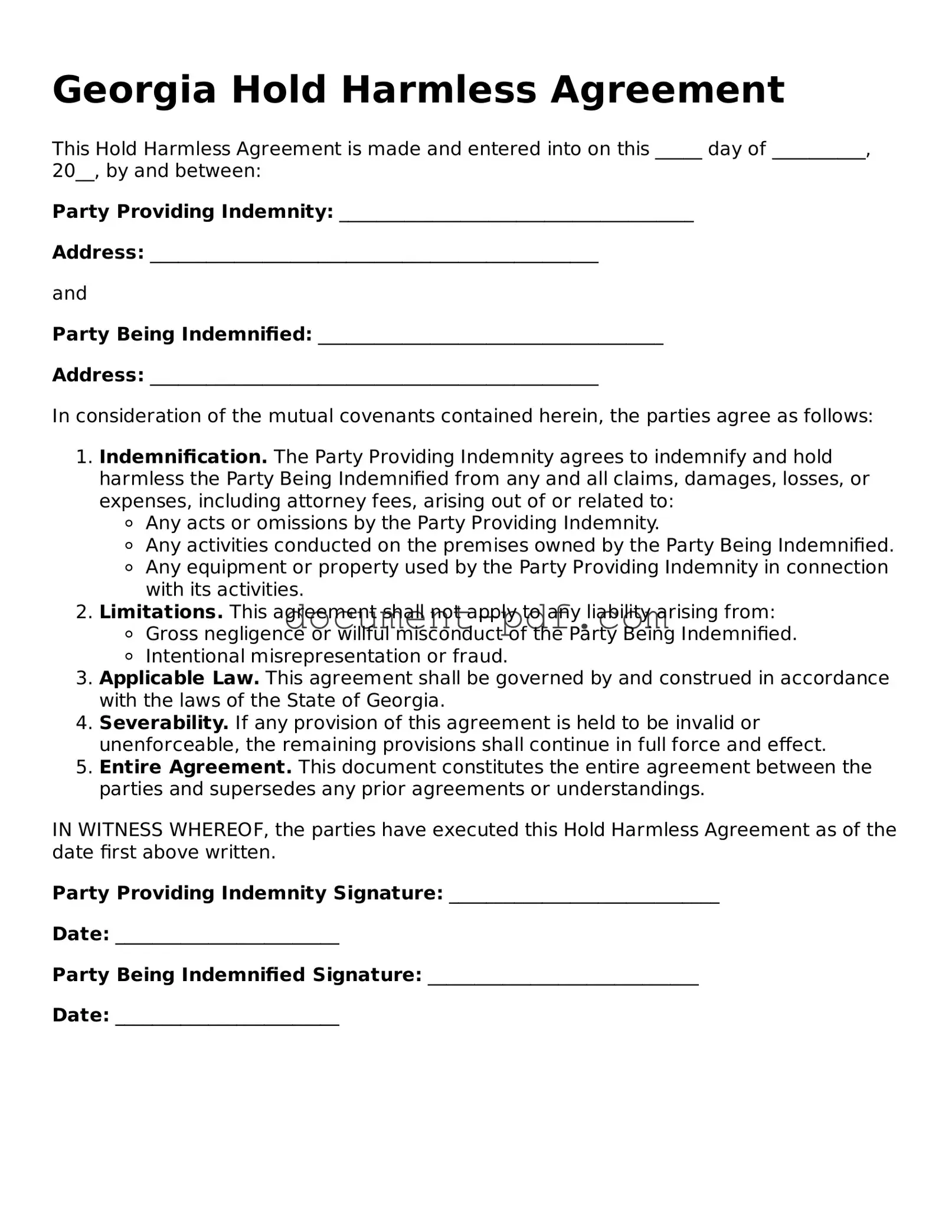Georgia Hold Harmless Agreement
This Hold Harmless Agreement is made and entered into on this _____ day of __________, 20__, by and between:
Party Providing Indemnity: ______________________________________
Address: ________________________________________________
and
Party Being Indemnified: _____________________________________
Address: ________________________________________________
In consideration of the mutual covenants contained herein, the parties agree as follows:
- Indemnification. The Party Providing Indemnity agrees to indemnify and hold harmless the Party Being Indemnified from any and all claims, damages, losses, or expenses, including attorney fees, arising out of or related to:
- Any acts or omissions by the Party Providing Indemnity.
- Any activities conducted on the premises owned by the Party Being Indemnified.
- Any equipment or property used by the Party Providing Indemnity in connection with its activities.
- Limitations. This agreement shall not apply to any liability arising from:
- Gross negligence or willful misconduct of the Party Being Indemnified.
- Intentional misrepresentation or fraud.
- Applicable Law. This agreement shall be governed by and construed in accordance with the laws of the State of Georgia.
- Severability. If any provision of this agreement is held to be invalid or unenforceable, the remaining provisions shall continue in full force and effect.
- Entire Agreement. This document constitutes the entire agreement between the parties and supersedes any prior agreements or understandings.
IN WITNESS WHEREOF, the parties have executed this Hold Harmless Agreement as of the date first above written.
Party Providing Indemnity Signature: _____________________________
Date: ________________________
Party Being Indemnified Signature: _____________________________
Date: ________________________
